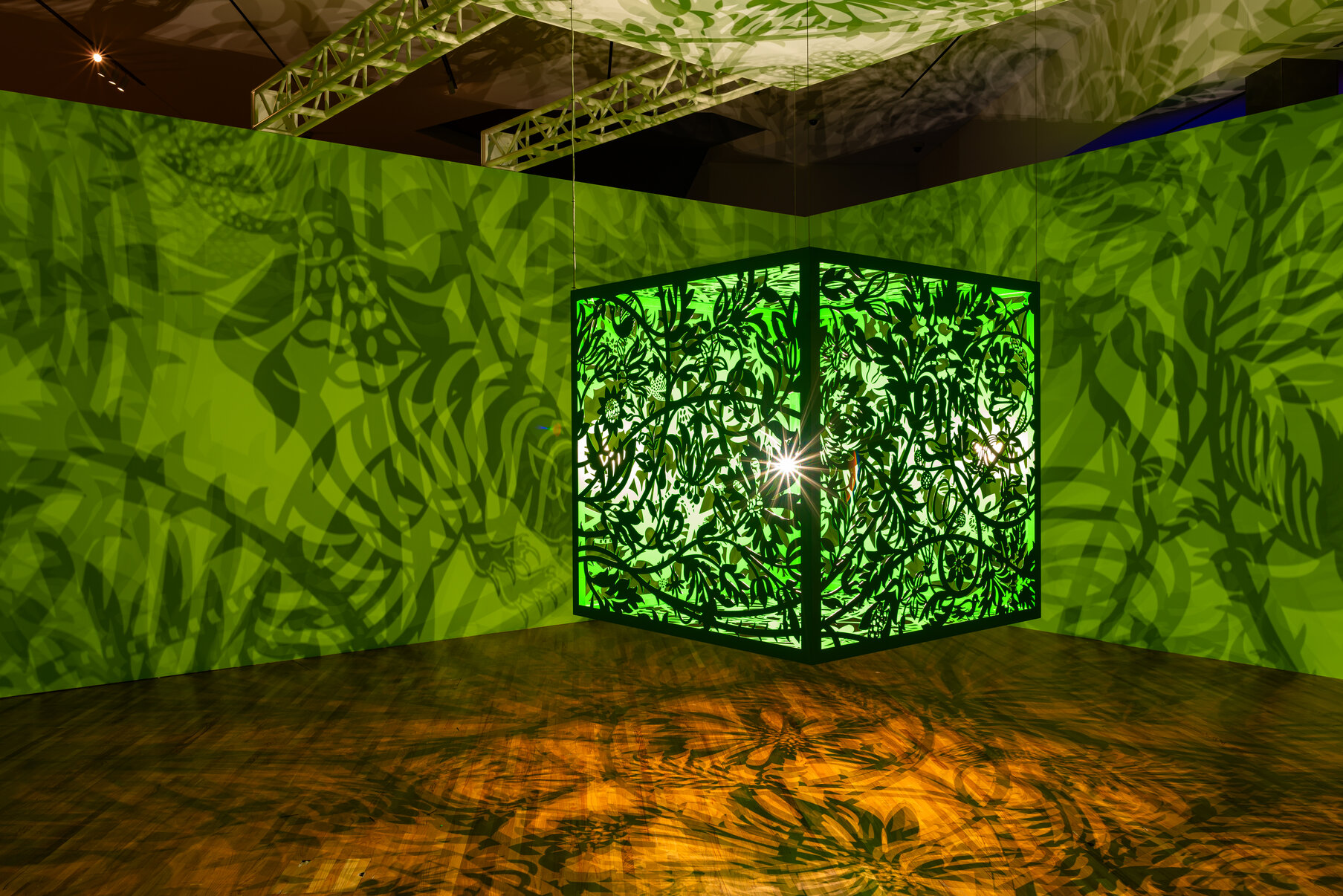by Roy Bernardi and Jennifer Leskiw
In the contemporary art scene, few artists encapsulate the complexities of human experience as effectively as Canadian artist Katie Pretti. Born in 1980, she graduated with honours from the Ontario College of Art and Design in 2004 and obtained her Masters in Contemporary Art History in 2023. She is currently based in downtown Toronto, Ontario. Her creations may be regarded as entirely non-objective abstraction infused with conceivable figurative elements. Her artwork challenges viewers to engage in a dialogue between the recognizable and the abstract.
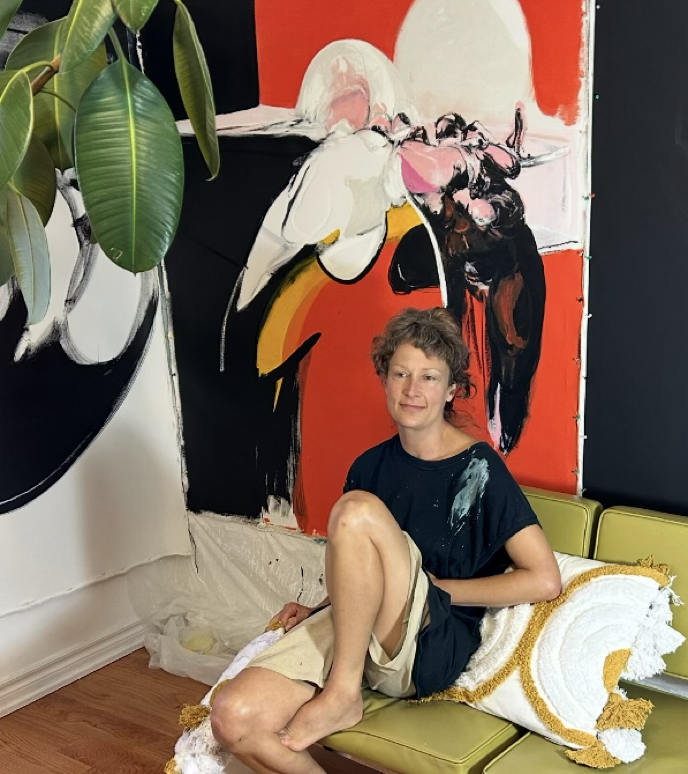
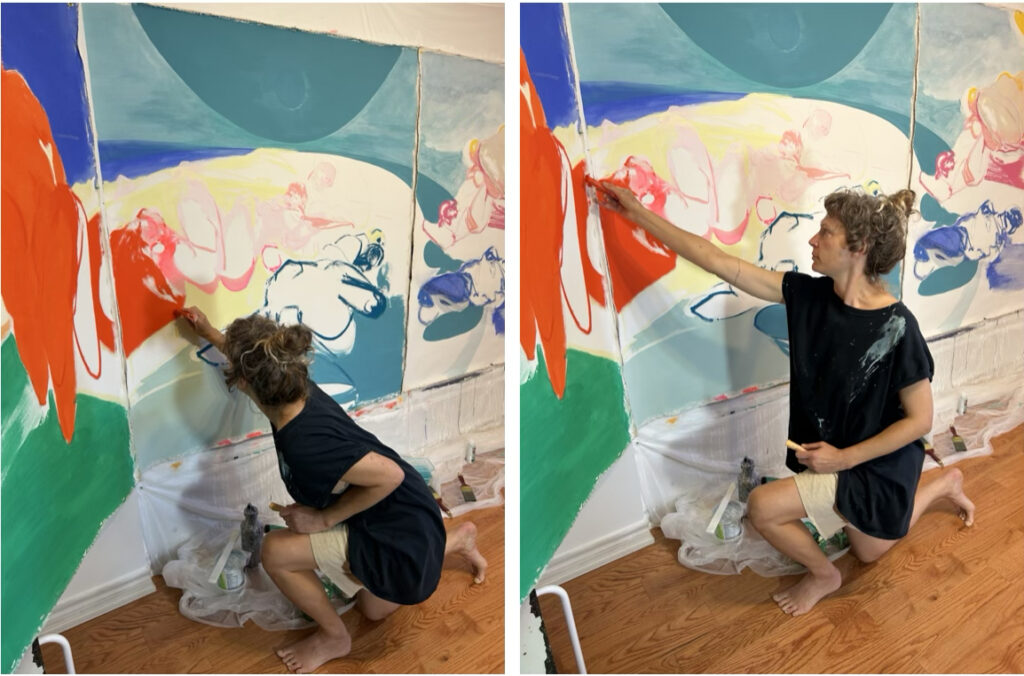
Pretti’s art often creates a nuanced interplay where the figure is obscured or rendered in such a way that it becomes part of the surrounding abstraction. In some works, the forms are distinctly recognizable, while in others, they dissolve into a tapestry of colour and texture, demanding the observer to ponder the relationship between representation and abstraction. This duality not only showcases her versatility as an artist but also reflects the complexity of human perception.
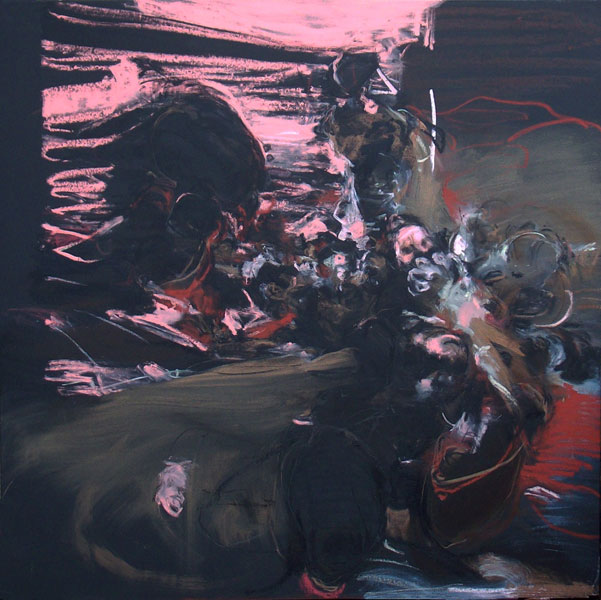
Through her art, Pretti invites us to explore the boundaries of abstraction and figurative representation. Each stroke and hue is deliberate, inviting the viewer to engage with the emotional resonance behind the images. Her unique approach encourages a deeper understanding of not only the figures portrayed but also the layers of meaning that lie beneath the surface. As her style evolves, the boundaries of abstraction are challenged.
Katie Pretti remains a pivotal figure in the art community, inspiring both admiration and contemplation among art lovers and critics alike. Her work is a testament to the power of art to evoke thought and reflection, transcending the simple act of viewing to become an immersive experience. Pretti’s contributions to the art world are not merely aesthetic; they are profound explorations of the human condition presented through a lens of abstract interpretation. As her career unfolds, followers of her work can anticipate the limitless potential of her creative journey.
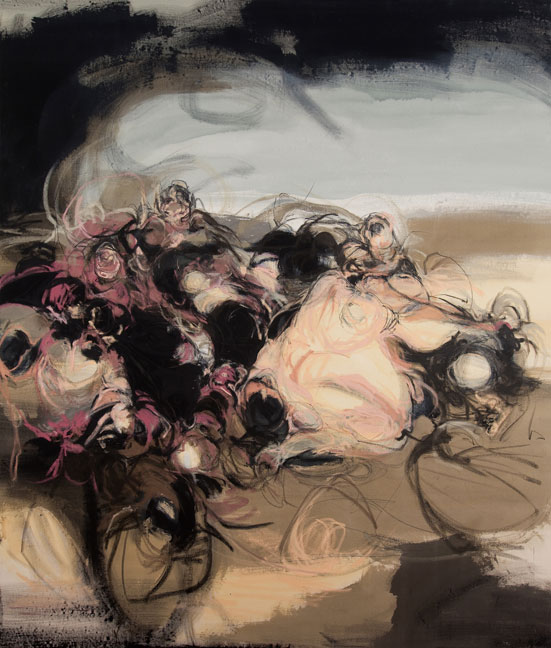
Pretti’s new works are a series of 12 pieces loosely based on the Vanitas trope, which is a theme from northern European paintings of the Baroque period. This theme is a reminder of life’s fragility, the transient nature of youth, and the inevitability of death. Also, most specifically, it’s a condemnation of vain pursuits. (The addition of which distinguishes this theme from the closely related memento mori paintings of the same era.) Traditionally conveyed through the depiction of a realistic still life, a Vanitas painting features an arrangement of objects which each illustrate an aspect of the moral. For instance, a skull is used to symbolize death; a burning candle, bubble, or hourglass signifies transience; decaying fruit or flowers represent decay; mirrors reference vanity.
This theme holds additional importance for Pretti. It represents a return to a collection of Vanitas themed paintings she created in 2010, which was a crucial series in her career. It was designed as a series of 10 pieces to work together similarly to Claude Monet’s Waterlilies, allowing viewers to observe the transition of light from day to night in the backgrounds of the compositions, which essentially featured figures set within landscapes. Vanitas No. 10 features “imagined figures contorting within a foreboding landscape during the transition from day to night… these imagined abstracted figures are attempting, in vain, to resist the arrival of darkness. The onset of darkness is inevitable”. This piece, from Pretti’s initial Vanitas series, serves as inspiration for the current work.
When Pretti first approached the Vanitas theme in 2010, the entire notion of death’s inevitability was merely an abstract idea to her; she could only intellectualize it. However, after experiencing her own encounter with death, her perception of the theme of Vanities transformed. This led her to truly grasp the sensation of fragility. That experience profoundly motivated Pretti to apply to the Ontario Arts Council to explore the Vanities theme once more. Now, 15 years later, equipped with a genuine understanding of the fear of death, she is reassessing her interpretation of Vanitas, but this time with a darker and bolder perspective. She is not particularly inclined to include a “beautiful” landscape element in her work this time. In her own words, “I am really leaning into colour and playing with composition and, of course, abstracted figures to create imagery that will express slight discomfort, maybe some anxiety, and certainly moments of fear. That’s not to say that this is gonna be a completely unpalatable, dark, unapproachable body of work. Some panels are going to present as bright and some as dark, but all will be dynamic compositions using bold colour. And the pallet does shift incrementally over the panels creating a cyclic sense to the series.” Pretti is trying to translate a narrative into abstract elements that ask the viewer to use their intuition to interpret. This would define her general method of abstraction, indeed. You imagine that you are observing a figure, yet you understand it is not a representation of a figure.
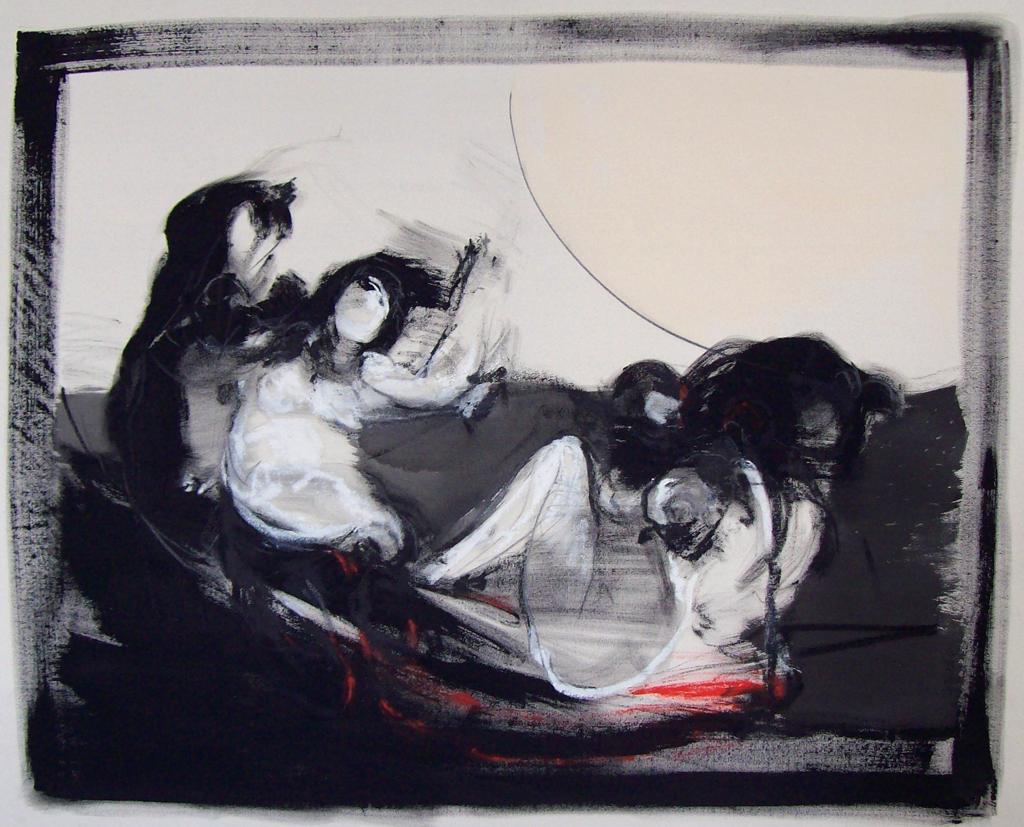
Some of her work could be considered non-objective abstraction while some could be considered figurative abstraction. According to Pretti, Daemons No. 3 could be interpreted as one’s inner demons being so persistent that they’ve materialized into reality, like the daemon figure is emerging from a dark realm, pushing forward in space, toward the viewer, toward reality … it’s a scary painting lol.
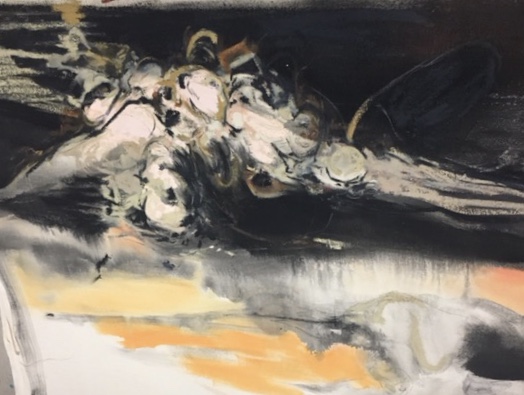
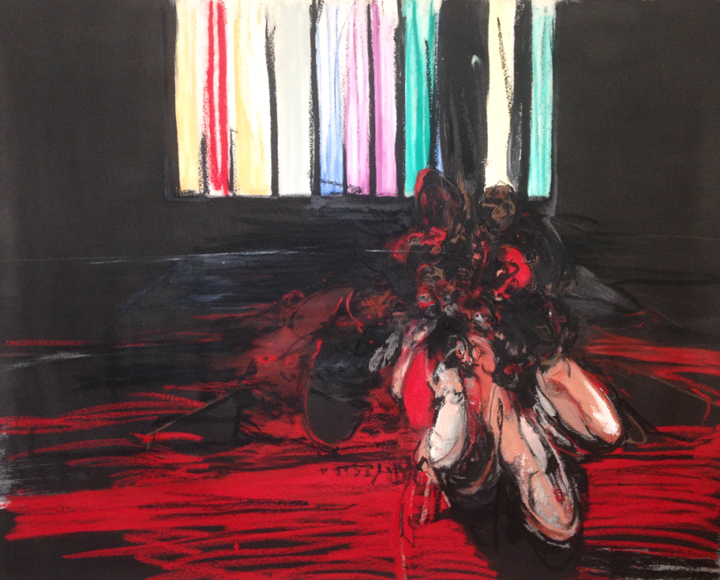
Corpus Hypercubus and Mudang paintings were obtained directly from the artist’s studio during a private visit. They exemplify what Pretti describes as “in-between” works that “are hugely informative of future work.” Corpus Hypercubus distinctly displays elements of both landscape and figure, and, most significantly, it showcases media and colour experimentation that appear in later works. The term mudang, a female shaman who communicates with the supernatural through dance rituals, resulted in the creation of the Mudang painting. The stripes of colour in the black ground foreshadow key pieces Pretti has exhibited since.
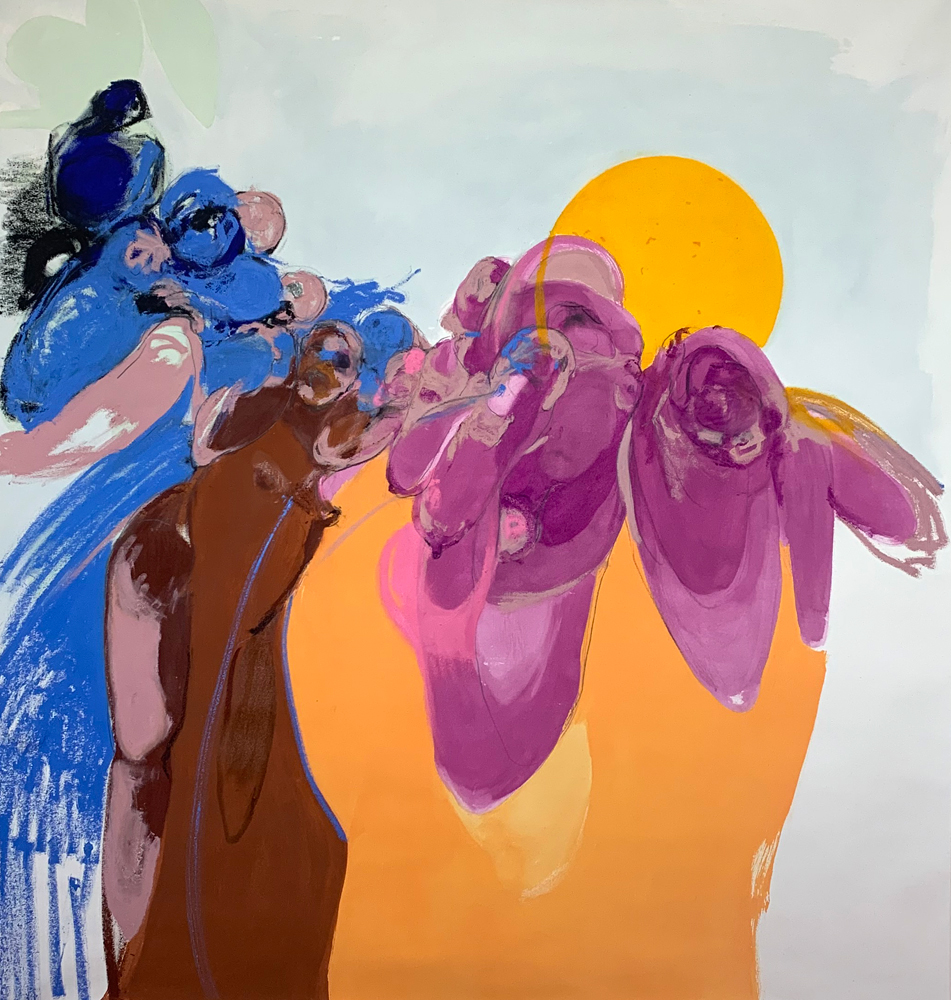
Beside Myself 1 is a current abstract expressionist painting. The expression ‘beside myself’ can be understood as a complex, multi-faceted, and evolving imagery, literally merging into one another. Additionally, it may convey feelings of intense frustration and exasperation, or evoke a sense of gut-wrenching dread or regret.
Pretti’s artistic endeavours are most aptly likened to those of British artist Cecily Brown (1969-), as both artists deconstruct the form of the human image, merging it into abstraction. However, the artists from whom Pretti draws inspiration include Edvard Munch (1863-1944) (especially his woodcuts), classical old masters such as Giovanni Battista Tiepolo (1696-1770) and Henry Fuseli (1741-1825), as well as the Abstract Expressionists Mark Rothko (1903-1970), Robert Motherwell (1915-1991), and Willem de Kooning (1904-1997)…
Pretti currently has work on view at The Modern, Toronto – Niagara Inaugural group exhibition (230 Niagara Street, Toronto) on view now through to January 2026 alongside works by Ben Woolfitt, Francoise Sullivan, Mark Roth, Andre Fauteux, Cora Cluett, Judy Singer, William Griffiths and Sandy Van Iderstine.
Pretti has held studios in Los Angeles, Buenos Aires, and Brooklyn, and has been artist in residence at COME (Buenos Aires), Ctrllab (Montreal), The White House (Toronto), and Spark Box Studios (Picton, Ontario). Her book of drawings, Sonority of Words, was launched in Toronto by Art Metropole. It was featured at the 2007 NYC Art Book Fair, and added to the Artists Books Library at the National Gallery of Canada. Pretti has also been profiled in Carte Blanche Volume 2: Painting, ArtSync, ArtSlant, Magenta Magazine Online, Elle Canada, Fashion Magazine, Canadian House and Home, and Inside Entertainment, among others.
